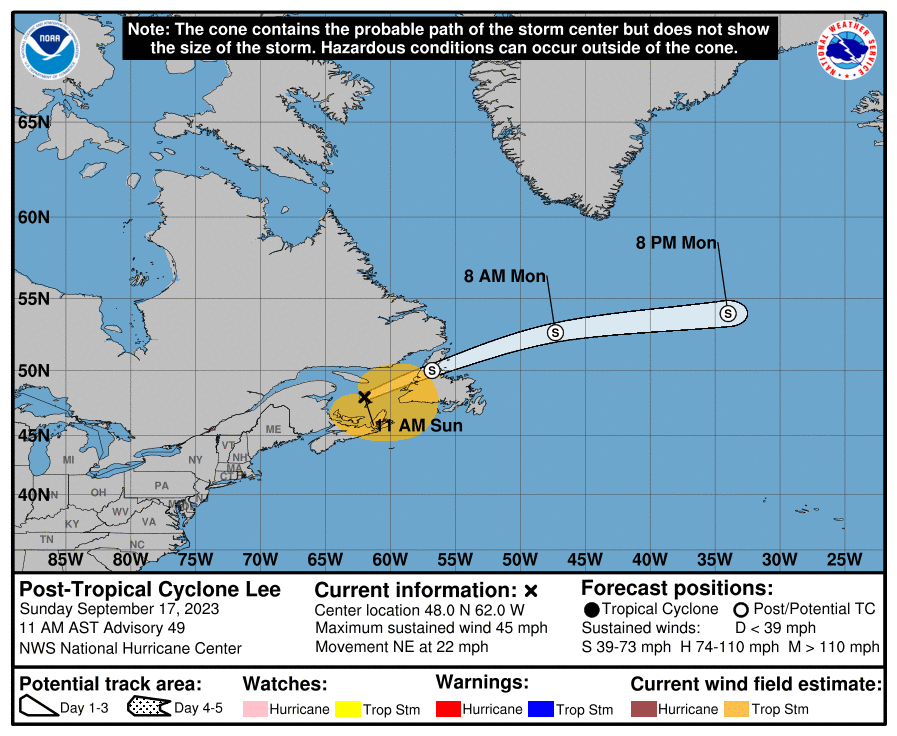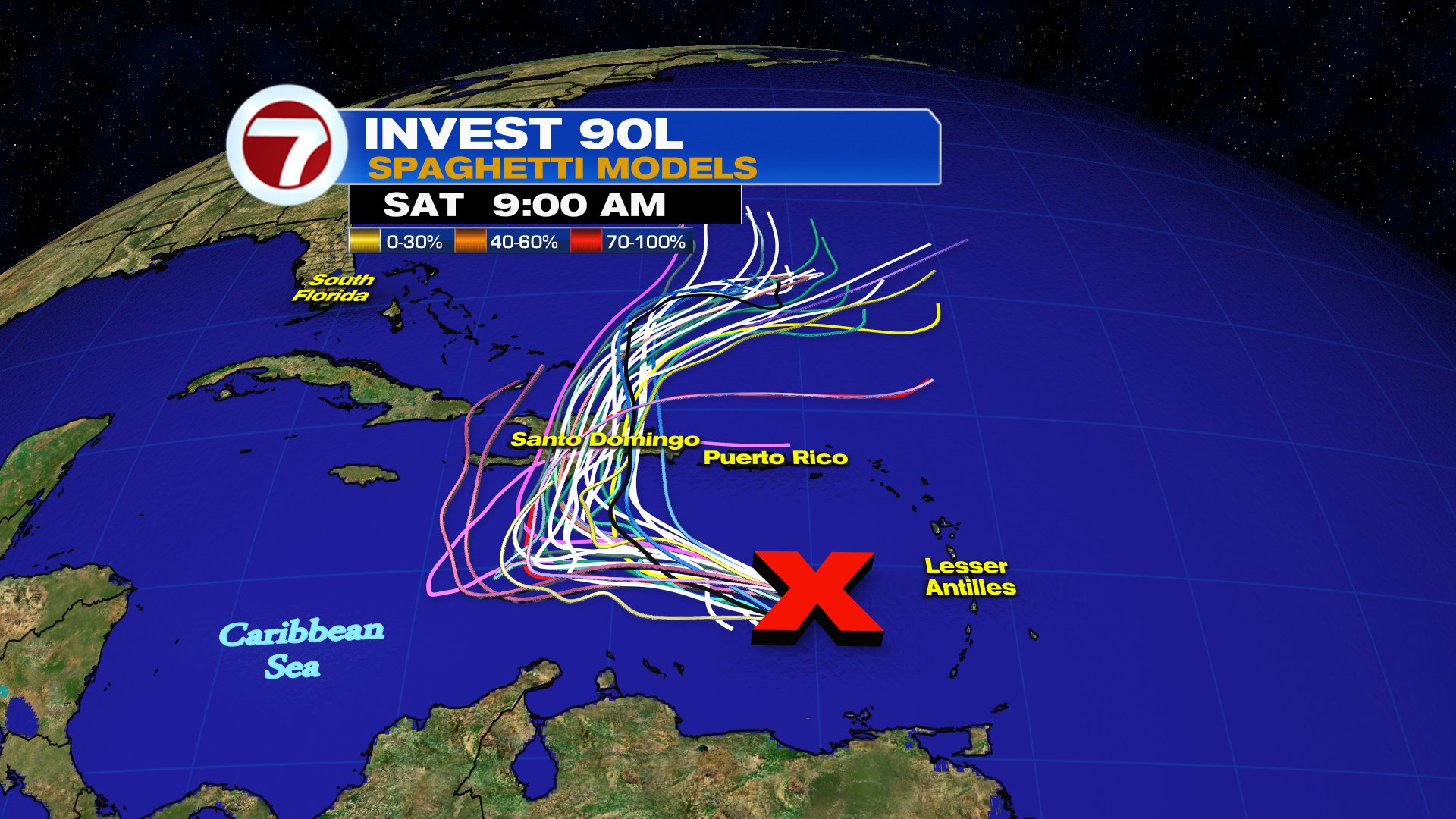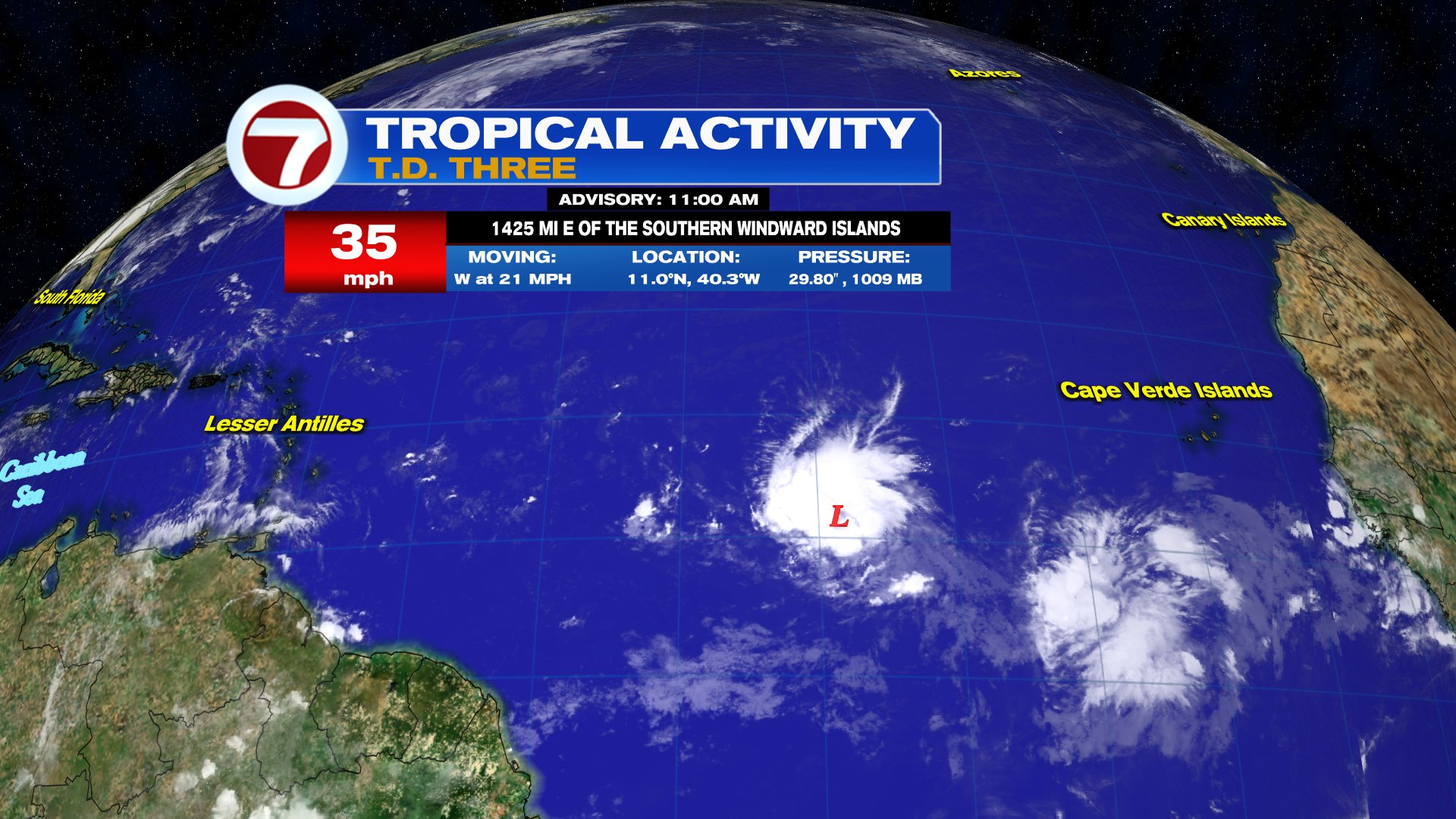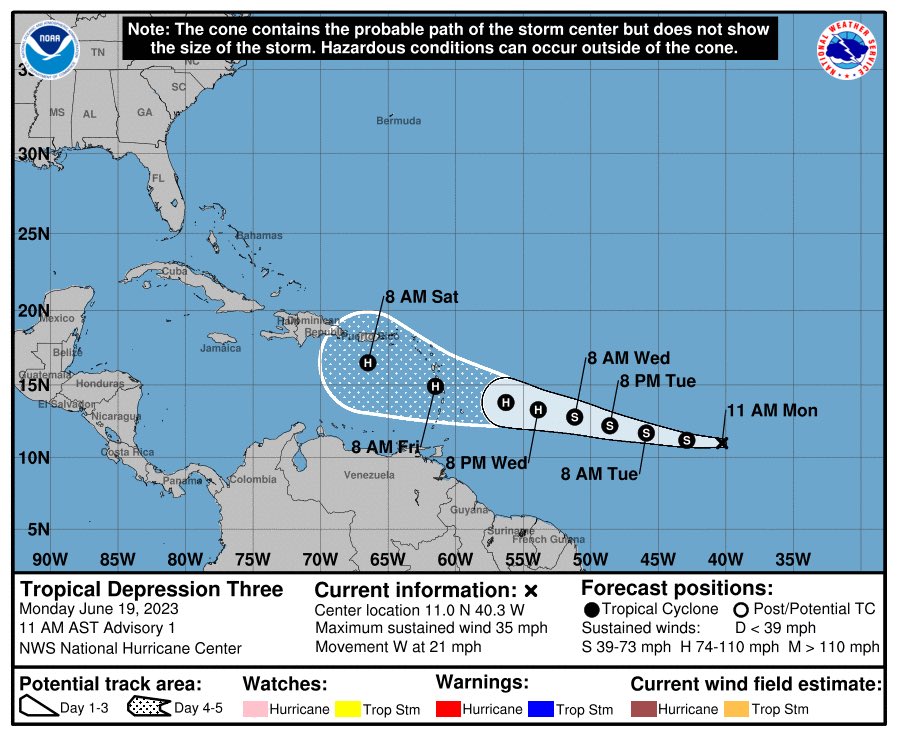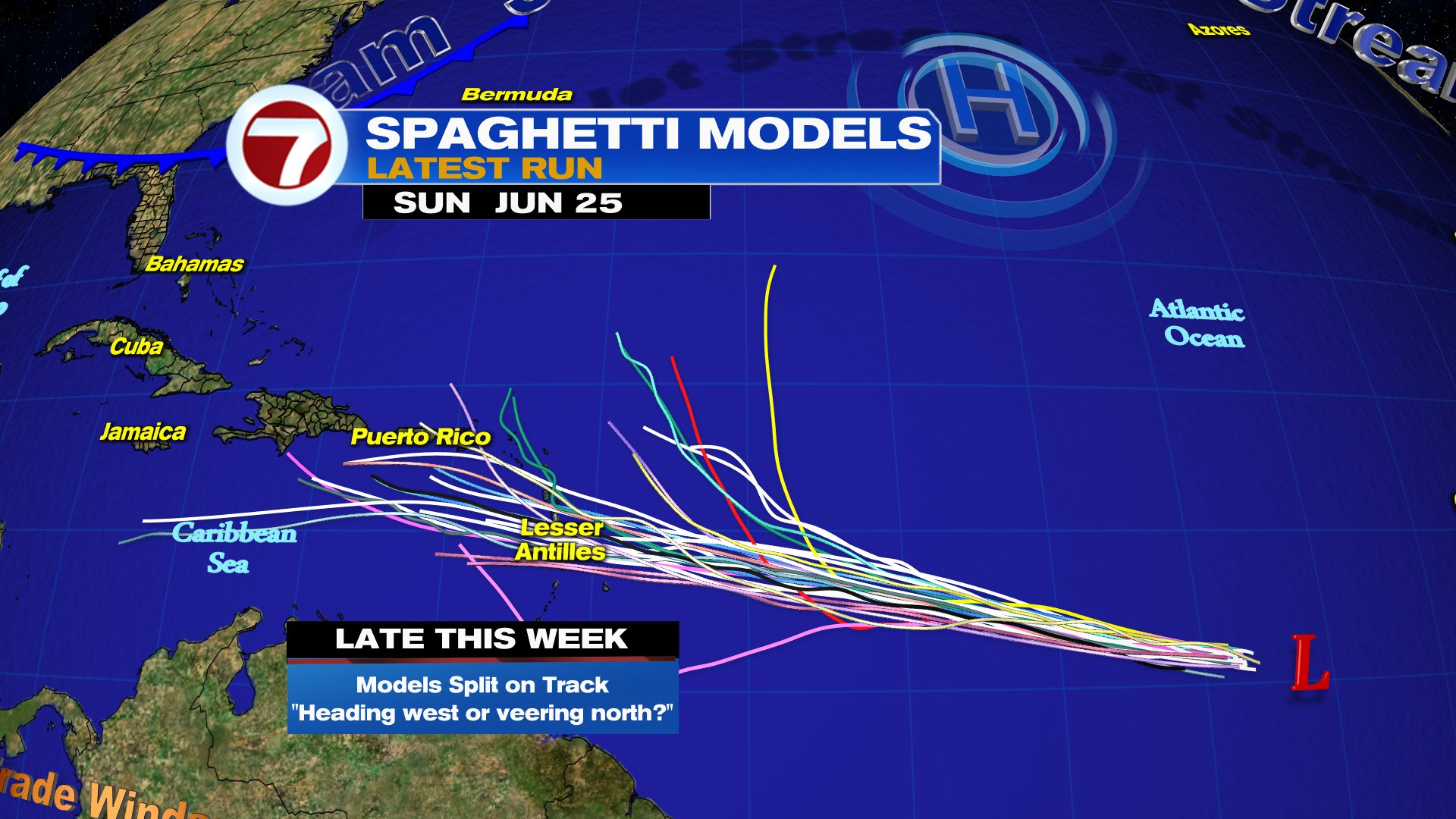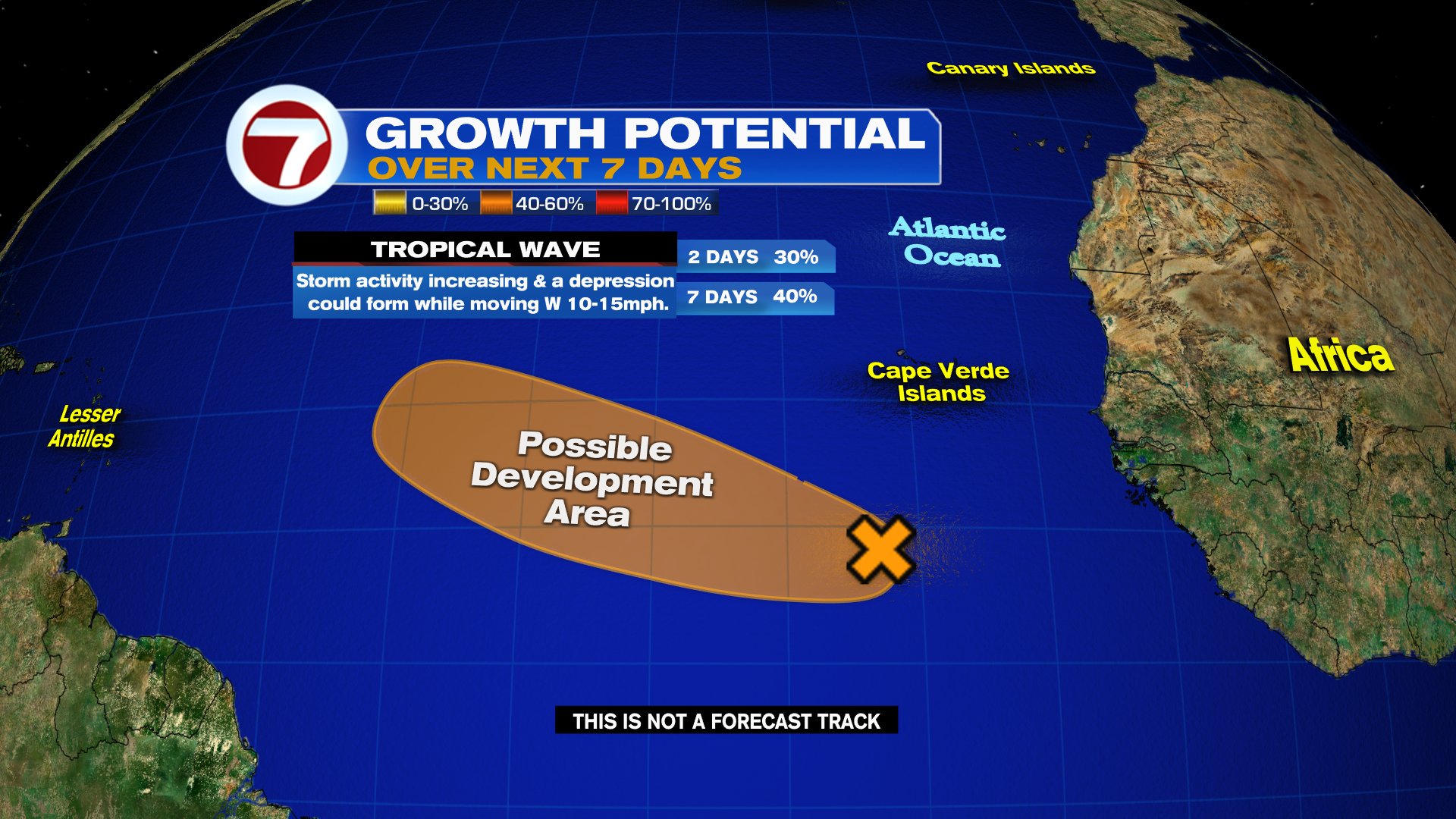It should stay very strong over the next 5 days
Thee National Hurricane Center (NHC) says it will continue to grow into a category 5 with 160 mph winds by Saturday.
- Per NHC: As stated above, Rapid Intensification (RI) is occuring, and will likely continue today.
- The question doesn't appear to be if RI continues, but rather how strong Lee will get, and how quickly will it get there.
- Many of the models are calling for remarkable rates of intensification, beyond rates normally seen with model forecasts.
- Both HAFS models forecast Lee to exceed 150 kt within the next 2 days, and even HCCA brings the hurricane above the category 5 threshold.
Where is it?
The system is just under 1000 miles away from the Leeward Islands and roughly 2000 miles away from South Florida. Plenty of time for monitoring but not too much for the Turks & Caicos and SE Bahamas. They should closely monitor the storm.
Future Track?
NHC says: Confidence continues to increase
that Lee will pass north of the northern Leeward Islands, though
swells associated with Lee will affect the islands starting
tomorrow. By the end of the forecast, the uncertainty is a little
higher, with the hurricane models (HAFS, HWRF) generally being
farther south than the global models. Very small changes were made
to the NHC track forecast, which is between the HCCA and simple
consensus aids.
Models
Models suggest a front will dive out the US and block the system from reaching land forcing it to turn north. However Bermuda will have to stay on top of it for a possible impact.
Bottom Line
As of this moment the worry meter for South Florida is low. Models are steadfast the system will eventually stop and move north away from the region.
Until I see that front moving offshore and the turn reflected in the official forecast cone, I will continue to monitor it closely and so should you.
The peak of hurricane season is September 10th. We should all be ready for whatever Mother Nature throws our way.





